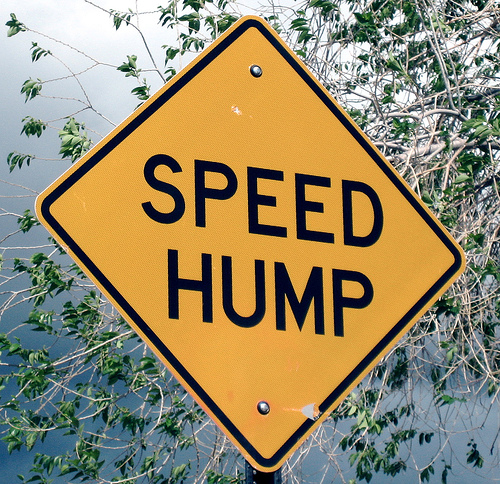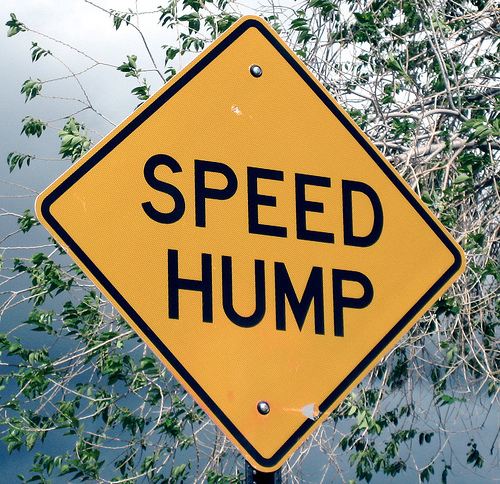 A request for calmer traffic led to road rage.Photo courtesy Joe Lewis via FlickrStephen Carr wanted his street in suburban Burke, Va., to be safer. He lobbied to have a speed hump installed. He was successful.
A request for calmer traffic led to road rage.Photo courtesy Joe Lewis via FlickrStephen Carr wanted his street in suburban Burke, Va., to be safer. He lobbied to have a speed hump installed. He was successful.
And it may have gotten him killed.
According to the Washington Post, Carr, 48, had requested the speed hump because he was concerned about the cars zooming by his home. There was an elementary school nearby. He thought it was a safety issue — which it is. If you’re hit by a car going 20 miles per hour, you’ve got a 95 percent chance of surviving. If the driver is doing 40, your chances of survival go down to 15 percent.
Some of Carr’s neighbors were pleased about the speed hump. Others drove by his house at night and honked. David Patton didn’t stop there:
In June, court and police records show, Patton angrily confronted Carr about the speed hump outside Carr’s house. Patton was charged with misdemeanor assault. His trial was set for Thursday.
On Sunday night, police say, Patton went further. Witnesses told police he burst into Carr’s house, tied up Carr and his girlfriend and, when Carr struggled, fatally shot him in the head, court records allege.
Patton, 44, was arrested a short time later in Carr’s back yard and charged with murder.
A Google map view of Field Master Drive, where Carr lived, shows a typical suburban pattern of cul-de-sacs and quiet residential streets, with a couple of major roads slicing through. Field Master Drive looks like a main route between two of those larger arterials, routes 640 and 644.
It’s a development style that has been shown to increase congestion on the main roads and speeding on the few side streets that provide some connection, rather than leading to a dead end. Streets like Field Master Drive.
Just last year, the state of Virginia announced it would not maintain streets in new subdivisions unless they were laid out with a design that links homes, stores, schools, and other destinations. The aim is to encourage a different style of development, one that would have fewer traffic jams, better access for emergency vehicles, and more walkable neighborhoods.
It’s a concept that several communities around the country are considering, and that the New York Times Magazine included in their 2009 “Year in Ideas” issue.
It does not apply retroactively, to places like the one where Stephen Carr lived and died — apparently over a traffic-calming device.
(h/t Extraordinary Observations)



